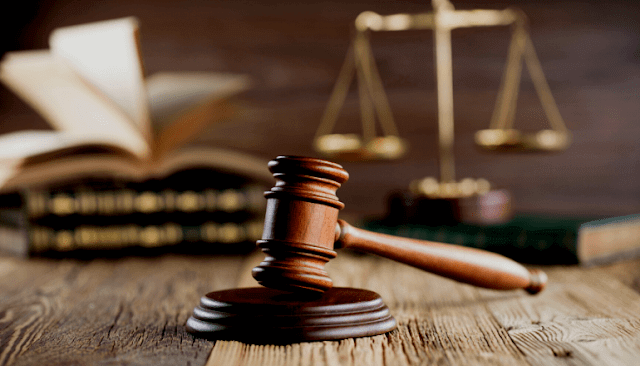This article is written by Sharad Nayak, pursuing Certificate Course in Arbitration: Strategy, Procedure and Drafting from LawSikho.
Table of Contents
Introduction
Case analysis is a basic skill that every lawyer is expected to know. By analysing a case one can learn and understand a lot of different aspects of it in a very less time. For analysing a case law one requires to examine a case law thoroughly. Case law can be analysed in several ways but here we are going to use a commonly known method called “IRAC” Analysis. The name of the case is- “M/s Tulsi Narayan Garg versus Madhya Pradesh Road Development Authority, Bhopal and Others” This was an appeal to the Supreme Court and its final judgement was given on 30 August, 2019.
Facts of the case
The first respondent (the M.P. Road Development Authority, Bhopal) awarded the appellant (a proprietorship firm registered as a Class ‘A’ contractor) a tender for construction and maintenance of roads in the rural region under Pradhan Mantri Gram Sadak Yojana. For the same purpose, The first respondent and the appellant also signed agreement no. 11 and agreement no. 12. According to these agreements, the work was required to be finished within 12 months i.e. till 21 October, 2009. Agreement number 11 and 12 were terminated by the first respondent, on 7/10/2013 and 27/10/ 2014 respectively, citing that the work was running slow.
At a later stage, the first respondent sent a notice to the appellant for determination of the liquidated damages. The appellant challenged the notice in the Madhya Pradesh High Court but the petition was disposed of there. Then a petition, against the termination of agreements number 11 and 12 and damages claimed by the first respondent, was filed by the appellant before the Madhya Pradesh Arbitral Tribunal.
While the petitions challenged by the appellant were pending before the Arbitral Tribunal for adjudication, a notice was issued by the first respondent to the appellant for recovering alleged damages. The second respondent (The G.M. of the first respondent) communicated to the third respondent (Collector of Sheopur, M.P.) to take action towards alleged liquidated damages under the provisions of the land revenue act. The appellant challenged all of this before the Madhya Pradesh High Court by stating that the respondents are not taking justifiable actions because the liquidated damages claimed by the respondents are under judicial consideration of the Arbitral Tribunal and are therefore prohibited from discussion in public. But the High Court dismissed these petitions and now the same has been brought to the Supreme Court by the appellant.
Issue of the case
- Can a party to an agreement by an arbiter in its own cause or cannot?
Rules
Clauses of the agreement, signed between the first respondent and the appellant, which are relevant for the present case are as follows:
- Dispute redressal system
“If any dispute or difference of any kind what-so-ever shall arise in connection with or arising out of this Contract or the execution of Works or maintenance of the Works thereunder, whether before its commencement or during the progress of Works or after the termination, abandonment or breach of the Contract, it shall, in the first instance, be referred for settlement to the competent authority, described along with their powers in the Contract Data, above the rank of the Engineer. The competent authority shall, within a period of 45 days after being requested in writing by the Contractor to do so, convey his decision to the Contractor. Such decision in respect of every matter so referred shall, subject to review as hereinafter provided, be final and binding upon the Contractor. In case the Work is already in progress, the Contractor shall proceed with the execution of the Works, including maintenance thereof, pending receipt of the decision of the competent authority as aforesaid, with all due diligence.”
- Arbitration
“Either party will have the right of appeal against the decision of the competent authority, nominated under Clause 24, to the Madhya Pradesh Arbitration Tribunal constituted under Madhya Pradesh Madhyastham Adhikaran Adhiniyam 1983 provided the amount of claim is more than Rs. 50,000/-.”
- Liquidated damages
“44.1 The Contractor shall pay liquidated damages to the Employer at the rate per week or part thereof stated in the Contract Data for the period that the Completion Date is later than the Intended Completion Date. Liquidated damages at the same rate shall be withheld if the Contractor fails to achieve the milestones prescribed in the Contract Data. However, in case the Contractor achieves the next milestone the amount of the liquidated damages already withheld shall be restored to the Contractor by adjustment in the next payment certificate. The total amount of liquidated damages shall not exceed the amount defined in the Contract Data. The Employer may deduct liquidated damages from payments due to the Contractor. Payment of liquidated damages shall not affect the Contractor’s other liabilities.
- Payment upon termination
“53.1 If the contract is terminated because of a fundamental breach of contract by the contractor, the Engineer shall issue a certificate for the value of the work done and materials ordered less liquidated damages, if any, less advance payments received up to the date of the issue of the certificate and less the percentage to apply to the value of the work not completed as indicated in the Contract Data. If the total amount due to the Employer exceeds any payment due to the Contractor, the difference shall be recovered from the security deposit and performance security, if any amount is still left un-recovered it will be a debt payable to the Employer.”
Case analysis
The lawyer of the appellant pleaded that if the alleged liquidated damages are pending for adjudication before the Arbitral Tribunal, then the notice served by the first respondent for the recovery of the damages is not valid. But the lawyer of the respondents pleaded that if the show-cause notice has been served to the appellant and the General Manager of the first respondent adjudicated and quantified the liquidated damages, then there is no wrong in initiating the recovery proceedings.
The Supreme Court observed that if clauses 44.1 and 53.1 are read together then it can be concluded that if the contractor is required to pay the liquidated damages after the termination of the contract then clause 24 can be invoked. Also, clause 25 of the agreement permits the aggrieved party to approach the Arbitral Tribunal, which was constituted on the basis of Adhiniyam, 1983. Therefore the General Manager of the first respondent invoked clauses 24 and the appellant thereof approached the Arbitral Tribunal.
The alleged liquidated damages are the subject matter which has been challenged under section 7 of the Adhiniyam, 1983, by the appellant, before the Arbitral Tribunal, and the verdict for it is still pending, therefore initiating the recovery proceedings is a wrong act on the part of the respondents. Therefore, no party to an agreement can be an arbiter in its own cause. It is also a common principle of law. In support of this statement, paragraph 7 of the judgment of State of Karnataka vs Shree Rameshwara Rice Mills Thirthahalli 1987 was also quoted by the Supreme Court. This judgment was also quoted by the High Court of Madhya Pradesh in the case of B.B. Verma and another vs State of Madhya Pradesh and another 2008.
The case of B.B. Verma and another vs State of Madhya Pradesh and another 2008 was referred by the appellant while filing petitions in the Madhya Pradesh High Court and are a subject matter of the instant appeals also. In this case, Madhya Pradesh High Court observed that if the damages, claimed by an authority or any officer on its behalf, get disputed by a contractor, such damages cannot be considered to be due according to agreement hence cannot be recovered by invoking provisions of land revenue act, still pending adjudication before the Arbitral Tribunal.
A case similar to instant appeals, Virendra Sharma versus State of M.P. and Others (Civil Appeal No. 5169 of 2016) is pending adjudication under Arbitration.
The Supreme Court in its judgment said that the respondents were not justified in demanding liquidated damages, after the termination of the agreement, by invoking the provisions of the Land Revenue Act. The respondents should have waited for the pending adjudication before the Arbitral Tribunal because clause 25 was also there in the same agreement, which talks about the right of appeal in the Madhya Pradesh Arbitral Tribunal, of which the appellant has taken advantage.
It was repeated by the bench of 3 Judges, Hon’ble Mr. Justice Ajay Rastogi, Hon’ble Mr. Justice Nuthalapati Venkata Ramana and Hon’ble Ms. Justice Indira Banerjee, that no party to an agreement can be an arbiter in its own cause.
Hence, the Supreme Court of India allowed the appeals and also added that the proceedings of the Arbitral Tribunal shall not be influenced by this judgment.
Conclusion
The conclusion of the analysis is that we should not initiate the recovery proceedings by invoking the provisions of the Land Revenue Act. Accordingly, the recovery orders are set aside by the Supreme Court. So now, only after the verdict of the Arbitral Tribunal, the authority can take any action. The common principle of justice was reiterated by the court that no party to an agreement can be an arbiter in its own cause. This is legally sustainable by law. It will create impartial decisions. Both parties should be treated and heard equally.
Hence, It is very clear that if a contractor challenges a demand raised by a state authority, then initiating the recovery proceedings is not justifiable, if the verdict is yet to come.
References
- https://indiankanoon.org/doc/88403840/
- https://blog.ipleaders.in/important-judgments-arbitration-conciliation-act-1996/
- https://fastforwardjustice.com/a-party-to-an-agreement-cannot-be-an-arbiter-in-his-own-case/
- https://lawbhoomi.com/conduct-of-arbitral-proceeding-under-arbitration-and-conciliation-act-1996/
Students of Lawsikho courses regularly produce writing assignments and work on practical exercises as a part of their coursework and develop themselves in real-life practical skills.
LawSikho has created a telegram group for exchanging legal knowledge, referrals, and various opportunities. You can click on this link and join:
 Serato DJ Crack 2025Serato DJ PRO Crack
Serato DJ Crack 2025Serato DJ PRO Crack











 Allow notifications
Allow notifications



